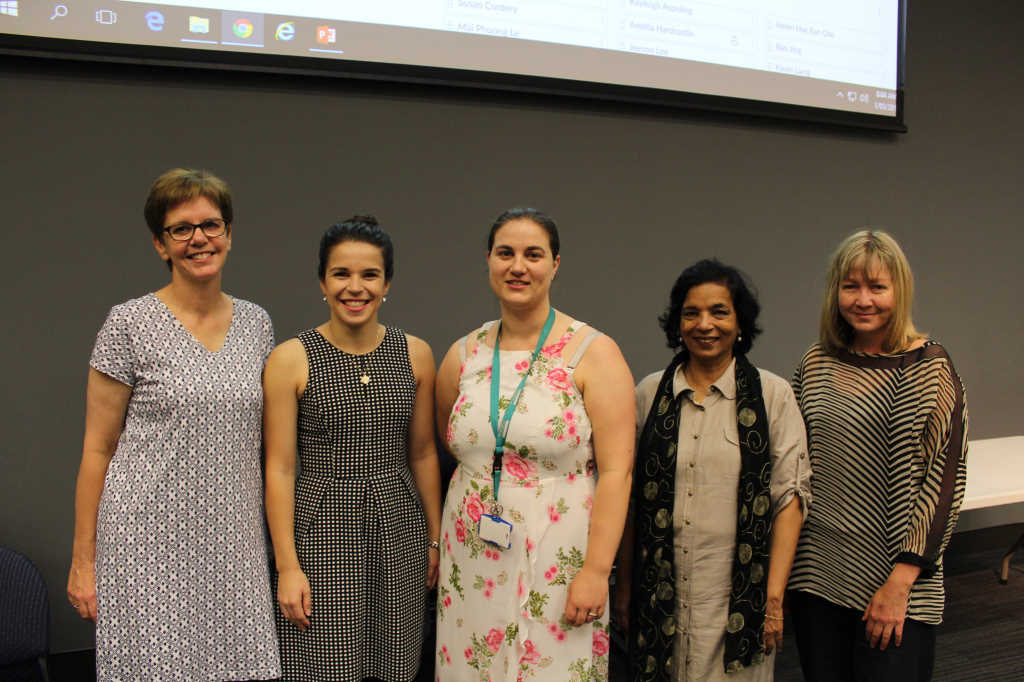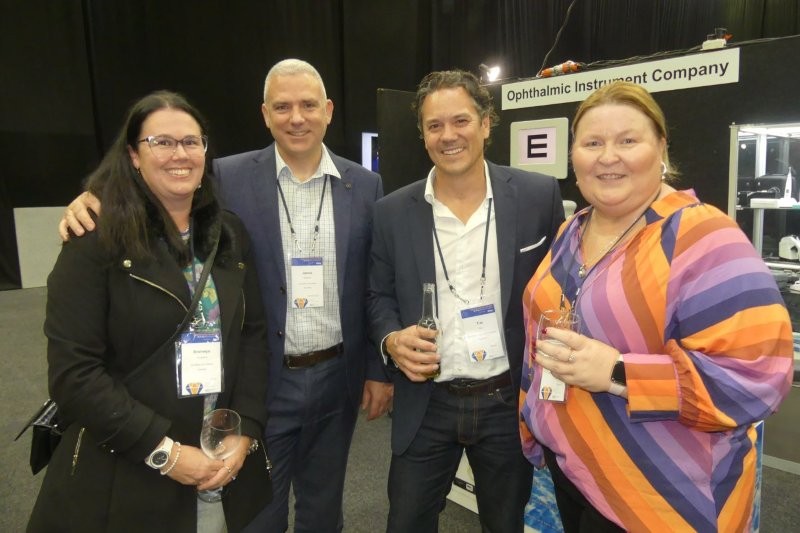Low Vision Day: a real eye-opener
How do you tell someone they’re losing their sight? What can you do to really help a low vision patient? How do you explain the often-complex web of support and technology available? These, and many other important questions were the focus of the School of Optometry and Vision Science (SOVS) Low Vision Day on 1 March.
The day included lectures, workshops and a panel discussion where students had the opportunity to talk directly with low vision patients and ask them questions about their lives and the help they had or hadn’t received.
Nick Lee, New Zealand Optometry Student Society (NZOSS) president, said it was the first time many students had had an opportunity to be exposed to true low vision patients. The day provided a safe and encouraging learning environment and the students he spoke to really appreciated the opportunity to talk openly to patients who had low vision and were comfortable with and open about their condition, he said. “Previously, it felt like there was a certain negative stigma surrounding low vision patients, but everyone who volunteered their time was just happy to be helped and helped our learning too.”
Samantha Simkin from the Blind and Low Vision Education Network NZ (BLENNZ), started the day with a talk about BLENNZ’s role helping low vision and blind children access education. Ophthalmologists, optometrists and teachers can refer to BLENNZ. As there are different levels of support available, it’s important to refer even in cases when the child is perhaps not fulfilling all the criteria, said Simkin.
Katy Webber, a counsellor with the Blind Foundation (BF), talked next about how BF can support adults and children alike, with different practical and emotional aspects of their life, to work towards a more independent and fulfilled life. Webber said the perception that BF is only for adults is wrong, BF and BLENNZ work together with the age group 0-21, but where BLENNZ’s focus is on education, BF focuses on supporting the individual in their daily life. So, it’s important to always make two referrals, one for BLENNZ and one for BF, she said.
Low vision patients Trevor Plumbly (see Blind ignorance column), Susan Grimsdell, Camille Guy and Michael Lloyd made up the much-anticipated panel for the day’s discussion session. From sharing their life stories and answering the many questions put to them by the audience, it was clear life with low vision isn’t all bad, but it certainly has its challenges. “It doesn’t stop me from doing the things I want to do, I just need to find another way to do them,” explained Lloyd.
The discussion covered everything from good and bad optometry visits, with most saying ‘telling it, how it is’ was the preferred way to receive and deliver bad news, to how public spaces could be improved to better support our low vision community.
The three afternoon workshops were practical, providing insights into adaptive technology, how to best communicate with patients with low vision and how to use electronic devices designed to assist patients with low vision, orientation and mobility. The latter included role-play testing techniques for correctly performing sighted-guide assistance.
The day ended with a refraction clinic, offering students an opportunity to perform a low vision refraction test. Student Andrew Kim said this part of the day was one of his highlights and a valuable experience. Melissa Zhu said it was one of the most rewarding and challenging practical learning sessions she’d experienced.
“As students, we mostly encounter patients with no pathology or patients who have pathology but are sufficiently sighted enough to come to our clinics. The duty of telling someone they will lose their driving and independence was a topic on a lecture slide I had once thought was far, far away. It was easy to avoid. (So) I felt most challenged by the hard truth that there are simply no cures yet to restore vision in some patients.
“This led to a sense of collective awkwardness when we faced our volunteers in the clinic; as if we have, somehow, failed to do our jobs. However, by talking to the volunteers both in clinic and in the panel, I have come to see people living fulfilling lives with their vision problems. This was the highlight of my day," explained Zhu.
“The most important message to me was that we, as practitioners, cannot carry a misguided idea that 'low vision' is a euphemism for the traditional meaning of 'blindness', and therefore an end to a person's productivity in society. We must treat the subject with sensitivity but not taboo, as our role is to help our patients do the best in life with their own vision - whether that means spectacles, surgery, CCTVs or a referral to the Blind Foundation.”


























